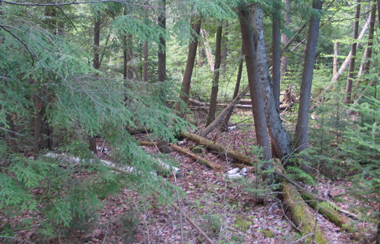
How the Barred Owl Survives
 The
Barred Owl easily adapts to its habitat.
While it prefers to nest in the tops of trees or in cavities of
trees, Barred Owls will often use other owl’s nests or nest
sticks to create a nesting area. In the Pacific Northwest, the
Barred Owl could live in either a
Douglas Fir or a
Blue Spruce. The barred owl is very adapt to
different habitats living from the Mexico all the way north to
Alaska.
The
Barred Owl easily adapts to its habitat.
While it prefers to nest in the tops of trees or in cavities of
trees, Barred Owls will often use other owl’s nests or nest
sticks to create a nesting area. In the Pacific Northwest, the
Barred Owl could live in either a
Douglas Fir or a
Blue Spruce. The barred owl is very adapt to
different habitats living from the Mexico all the way north to
Alaska.
Movement for Barred Owls occurs mainly by flight.
Its large wing span allows for easy flight, with little noise.
When the owl leaves its nest, it typically creates a distracting
by flying in a U-shaped pattern. This behavior confuses
potential predators of the nest location. This owl also has the
ability to walk and hop. When owls use their legs for movement,
wing movement normally accompanies it.
When reacting to environmental stimuli the
Barred Owl uses
its many senses. It uses its eyes for seeing in very dim light.
Another nocturnal creature is a
bat. Within the eye it has more rods than cones, which allows for
vision in dim light, although it does distort their color
perception. The Barred Owl’s hearing allows them to place
exactly where sounds come from. This helps them accurately
pinpoint their prey. Within their ear system, owls have a large
amount of auditory neurons. The most prominent structure that
the Barred Owl possesses are its wings. By having large wings,
it allows them to engage in silent flight. Owls feathers are
also adapted to increase the silence of their flight. This
allows them to surprise their prey, allowing a smaller
opportunity for prey to escape. To learn more about how the
Barred Owl survives,
click here to see its habitat.